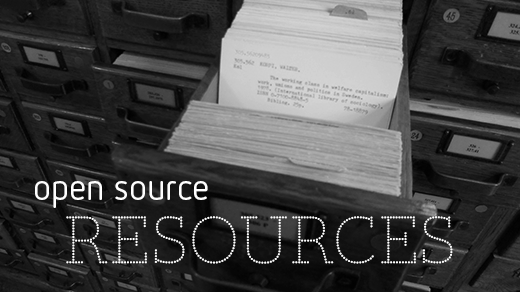
Opensource.com
"Open hardware," or "open source hardware," refers to the design specifications of a physical object which are licensed in such a way that said object can be studied, modified, created, and distributed by anyone.
"Open hardware" is a set of design principles and legal practices, not a specific type of object. The term can therefore refer to any number of objects—like automobiles, chairs, computers, robots, or even houses.
Like open source software, the "source code" for open hardware—schematics, blueprints, logic designs, Computer Aided Design (CAD) drawings or files, etc.—is available for modification or enhancement by anyone under permissive licenses. Users with access to the tools that can read and manipulate these source files can update and improve the code that underlies the physical device. They can add features or fix bugs in the software. They can even modify the physical design of the object itself and, if they wish, proceed to share such modifications.
Open hardware's source code should be readily accessible, and its components are preferably easy for anyone to obtain. Essentially, open hardware eliminates common roadblocks to the design and manufacture of physical goods; it provides as many people as possible the ability to construct, remix, and share their knowledge of hardware design and function.
How is open hardware licensed?
Open source hardware licenses generally permit recipients of the designs and documentations to study them, redistribute and modify them, and then to distribute any modifications. Additionally, open hardware licenses don't prevent someone from giving away or even selling the project's documentation.
Like software, hardware designs and inventions are subject to copyright and patent law. And like open source software, open source hardware uses these intellectual property laws creatively to make hardware designs publicly accessible. Because of their similarity to open source software projects, many open hardware projects simply use existing free and open source software licenses when licensing their works. Others use the Creative Commons By Attribution licenses, which are more focused on the features of works of art, as opposed to software. Both copyright law (in the case of source code and design documentation) and patent law (in the case of design processes and material technologies) apply to open hardware. Trademark law is also pertinent to the branding names and logos of open hardware.
For more information on open hardware licensing, consult the Open Source Hardware Association and the Open Source Hardware and Design Alliance.
How is open hardware different from other hardware?
All open hardware must be accompanied by documentation, including design files and source code. In addition, the license governing the reproduction of open hardware must allow modification and distribution of those design files in a way that allows others to easily obtain them. This makes possible—and even encourages—studying, troubleshooting, modifying, and improving open hardware.
If a piece of open hardware incorporates software of any kind, then that software should generally be released under an approved open source license. Alternatively, the open hardware's interfaces should be documented in a way that makes writing open source software for the hardware as easy as possible.
Essentially, open hardware is all about making the object as easy to remix and reproduce as possible. Closed hardware uses obfuscation and patent law to make the recreation of the objects as difficult as possible, usually to ensure vendor lock-in in a supply line that doesn't involve hobbyists and makers or other competitors.
How is open source hardware different from open source software?
Because open hardware projects usually result in the production or prototyping of a physical object, they almost always involve monetary investment for physical materials. While open software projects do involve labor costs and monetary investment, software can typically be distributed with lower overhead and is sometimes offered "free as in beer" (or "gratis"). Aside from offering documentation and source files to the public for no cost, it's not financially feasible for most open hardware projects' physical components to be offered gratis.
This doesn't mean that the open hardware movement isn't focused on minimizing cost for developers. In fact, initiatives like the Open Source Hardware Central Bank aid in securing sustainable funding for open hardware projects. Tools like KiCad help develop schematics for these projects, as well.
Where can I learn more about open hardware?
We recommend checking out the Open Source Hardware Association's site, as well as Wikipedia's entry on open source hardware. Companies like SparkFun, Adafruit, and Lulzbot also supply parts and equipment used in hardware prototyping.

